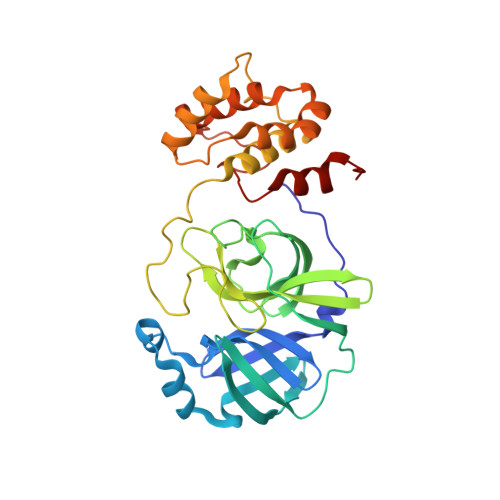Mechanism for controlling the dimer-monomer switch and coupling dimerization to catalysis of the severe acute respiratory syndrome coronavirus 3C-like protease.
Shi, J., Sivaraman, J., Song, J.(2008) J Virol 82: 4620-4629
- PubMed: 18305031
- DOI: https://doi.org/10.1128/JVI.02680-07
- Primary Citation of Related Structures:
2QCY - PubMed Abstract:
Unlike 3C protease, the severe acute respiratory syndrome coronavirus (SARS-CoV) 3C-like protease (3CLpro) is only enzymatically active as a homodimer and its catalysis is under extensive regulation by the unique extra domain. Despite intense studies, two puzzles still remain: (i) how the dimer-monomer switch is controlled and (ii) why dimerization is absolutely required for catalysis. Here we report the monomeric crystal structure of the SARS-CoV 3CLpro mutant R298A at a resolution of 1.75 A. Detailed analysis reveals that Arg298 serves as a key component for maintaining dimerization, and consequently, its mutation will trigger a cooperative switch from a dimer to a monomer. The monomeric enzyme is irreversibly inactivated because its catalytic machinery is frozen in the collapsed state, characteristic of the formation of a short 3(10)-helix from an active-site loop. Remarkably, dimerization appears to be coupled to catalysis in 3CLpro through the use of overlapped residues for two networks, one for dimerization and another for the catalysis.
- Department of Biological Sciences, National University of Singapore, 14 Science Drive 4, Singapore 117543, Republic of Singapore. bchsj@nus.edu.sg
Organizational Affiliation:
















